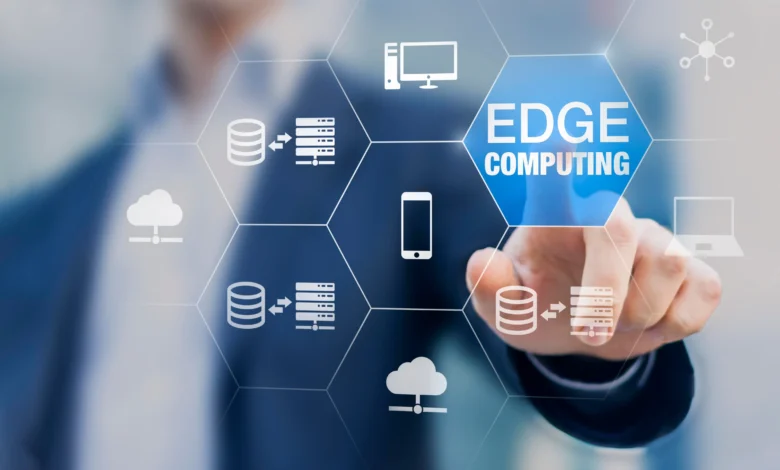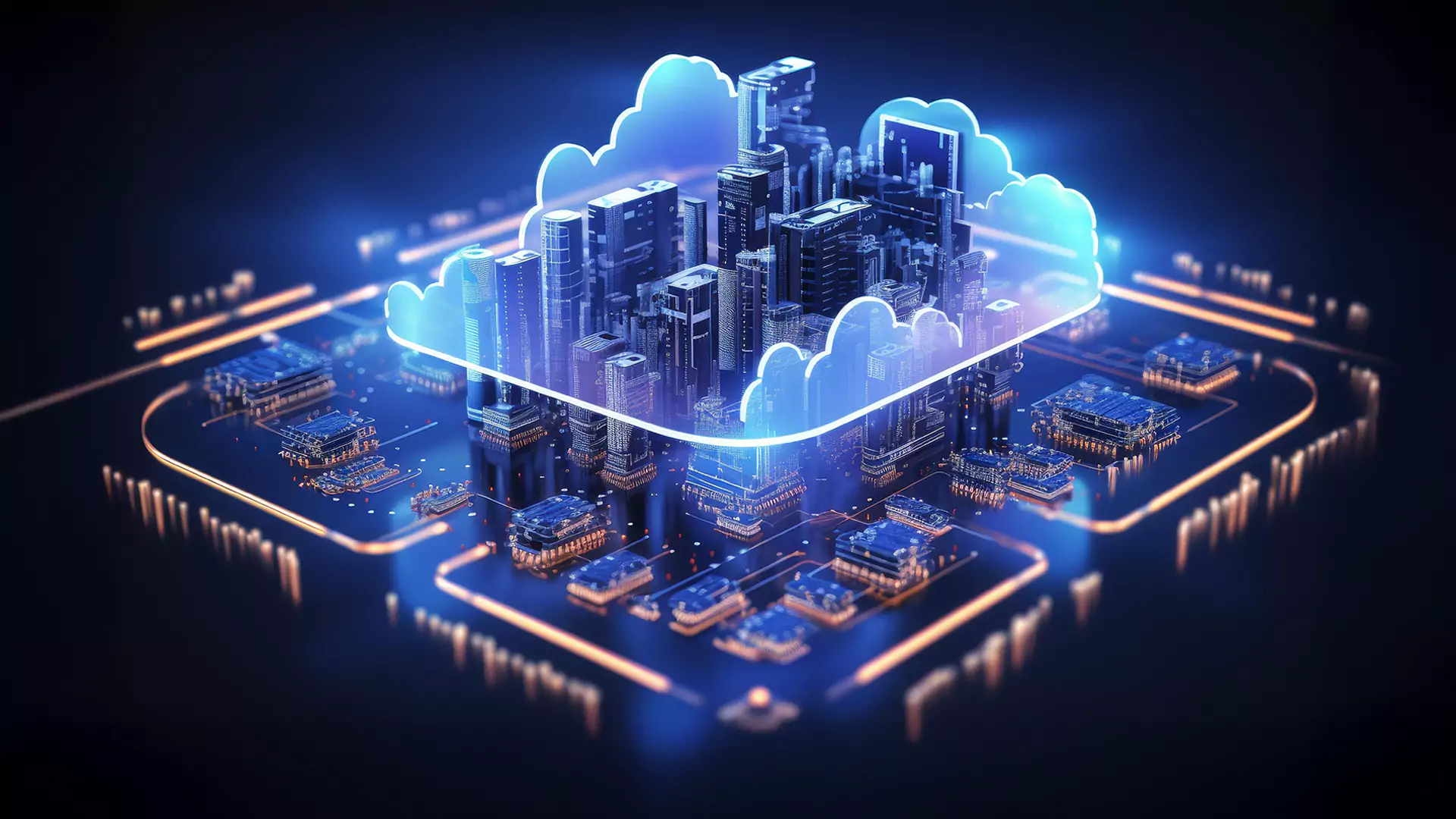
The exponential growth of Internet of Things Edge Computing for IoT has fundamentally transformed how businesses and consumers interact with technology. From smart homes and wearable devices to industrial sensors and autonomous vehicles, billions of connected devices generate massive volumes of data every second. Traditional cloud computing architectures, which rely on transmitting all this data to centralized data centers for processing, are increasingly struggling to meet the demands of modern IoT applications. Network congestion, latency issues, bandwidth limitations, and privacy concerns have created a compelling need for a more efficient approach.
Edge computing emerges as a revolutionary solution to these challenges by bringing computational power closer to where data originates. Rather than sending raw information across vast networks to distant servers, edge computing for IoT processes data locally at or near the source, whether that’s on the IoT device itself or on nearby edge servers. This paradigm shift enables real-time data processing, dramatically reduces latency, conserves bandwidth, and enhances security and privacy.
The integration of Edge Computing for IoT represents more than just a technical evolution—it’s a fundamental reimagining of how distributed systems operate. By processing data where it’s generated, organizations can achieve instantaneous insights, make split-second decisions, and operate efficiently even in environments with limited or intermittent connectivity. Manufacturing facilities can detect equipment anomalies in milliseconds, autonomous vehicles can react to hazards without cloud dependency, and healthcare devices can provide life-saving alerts without network delays.
As we stand at the intersection of 5G networks, artificial intelligence, and increasingly sophisticated IoT deployments, Edge Computing for IoT becomes essential for technology leaders, developers, and businesses seeking to harness the full potential of connected devices. This article explores the intricacies of edge computing for IoT, examining its benefits, challenges, use cases, and the transformative impact it’s having across industries worldwide.
Edge Computing and Its Architecture
What is Edge Computing for IoT
Edge Computing for IoT refers to a distributed computing paradigm that brings data storage and computation closer to the sources of data generation rather than relying on a centralized cloud-based system. In the context of IoT, this means processing information at or near IoT devices themselves, at the network’s “edge,” instead of transmitting everything to remote data centers located hundreds or thousands of miles away.
The fundamental principle behind Edge Computing for IoT technology is simple yet powerful: minimize the distance data must travel, thereby reducing latency and bandwidth consumption while increasing processing speed. This architectural approach creates a tiered system where intelligent decision-making can occur locally, with only relevant, processed information sent to central cloud platforms for long-term storage, advanced analytics, or enterprise-wide insights.
Key Components of Edge Computing for IoT Architecture
An effective edge computing infrastructure typically consists of several interconnected layers. The first layer includes the edge devices themselves—sensors, cameras, industrial machines, and smart appliances that generate data. These devices often possess limited processing capabilities but can perform basic filtering and preprocessing.
The second layer comprises edge servers or gateways, which are more powerful computing resources positioned in proximity to edge devices. These intermediate nodes can execute complex analytics, run machine learning algorithms, aggregate data from multiple sources, and make autonomous decisions based on predefined rules or AI models.
The third layer connects to the traditional cloud infrastructure, where comprehensive data warehousing, historical analysis, model training, and enterprise applications reside. This hybrid edge-cloud architecture ensures that each processing tier handles tasks most suited to its capabilities and position in the network hierarchy.
Communication protocols, security frameworks, and orchestration platforms form the connective tissue binding these components together, enabling seamless data flow and coordinated operations across the entire edge computing ecosystem.
How Edge Computing Transforms IoT Data Processing
The Traditional Cloud-Centric Model’s Limitations
Conventional IoT deployments rely heavily on cloud computing, where all sensor data streams to centralized data centers for processing. While this model offers virtually unlimited storage and computational power, it introduces several critical bottlenecks that become increasingly problematic as IoT deployments scale.
Network latency represents perhaps the most significant challenge. Even with high-speed internet connections, the physical distance between IoT devices and cloud servers creates unavoidable delays. For applications requiring split-second responses—such as autonomous vehicles, industrial robotics, or emergency medical systems—these delays can prove catastrophic.
Bandwidth constraints present another formidable obstacle. As the number of connected devices multiplies into the billions, the sheer volume of data generated overwhelms network infrastructure. A single autonomous vehicle, for instance, can generate terabytes of sensor data daily. Transmitting all this information to the cloud is neither practical nor cost-effective.
Additionally, cloud-dependent architectures create single points of failure. When internet connectivity falters or cloud services experience outages, IoT systems become inoperable, even if the physical devices remain functional.
Edge Computing’s Data Processing Revolution
Edge computing addresses these limitations by fundamentally restructuring how IoT data flows and where processing occurs. Instead of acting as mere data collection endpoints, IoT devices and edge servers become intelligent decision-makers capable of local analysis and autonomous action.
This transformation enables real-time processing at unprecedented speeds. Data analysis happens within milliseconds of generation, allowing immediate responses to changing conditions. Manufacturing equipment can detect quality issues and adjust parameters instantaneously, preventing defective production. Healthcare monitors can identify critical patient conditions and alert staff without waiting for cloud processing.
The architecture also implements intelligent data filtering, where edge nodes process raw data locally and transmit only relevant insights to the cloud. This approach dramatically reduces bandwidth consumption—often by 90% or more—while ensuring that critical information still reaches central systems for long-term analysis and strategic decision-making.
Furthermore, edge computing enables offline operation. Because processing occurs locally, IoT systems can continue functioning during network outages, ensuring business continuity and operational resilience even in remote or unreliable connectivity environments.
Key Benefits of Edge Computing for IoT Applications

Reduced Latency and Real-Time Responsiveness
The most compelling advantage of Edge Computing for IoT is the dramatic reduction in latency. By processing data at the source, response times decrease from hundreds of milliseconds or even seconds to just microseconds or single-digit milliseconds. This improvement isn’t merely incremental—it’s transformative for applications where timing is critical.
Real-time analytics become genuinely instantaneous. Industrial control systems can detect anomalies and initiate corrective actions before problems escalate. Augmented reality applications can render virtual objects seamlessly without perceptible lag. Autonomous vehicles can process sensor data and make navigation decisions within the tight timeframes required for safe operation. This low-latency processing enables entirely new categories of applications that simply weren’t feasible with cloud-only architectures, opening opportunities for innovation across virtually every industry sector.
Bandwidth Optimization and Cost Reduction
Edge computing significantly reduces bandwidth consumption by filtering and aggregating data locally before transmission. Rather than streaming raw sensor readings continuously to the cloud, edge systems send only processed results, alerts, or summaries.
For organizations deploying thousands or millions of IoT devices, this optimization translates to substantial cost savings. Bandwidth expenses decrease dramatically, as does the need for expensive high-capacity network infrastructure. Cloud storage and processing costs similarly decline since less data requires centralized handling.
This efficiency becomes particularly crucial in scenarios involving high-resolution video streams, continuous sensor monitoring, or environments with expensive or metered connectivity. Edge processing ensures that network resources are utilized judiciously, maximizing value while minimizing operational expenses.
Enhanced Security and Data Privacy
Security considerations make edge computing increasingly attractive for sensitive IoT deployments. By processing data locally, organizations can minimize the exposure of confidential information during transmission across potentially vulnerable networks.
Edge Computing for IoT architecture enables data anonymization and encryption at the source, ensuring that personally identifiable information or proprietary business data never leaves the secure edge environment unless necessary. This approach proves particularly valuable in healthcare, financial services, and other regulated industries with strict data privacy requirements.
Local processing also reduces attack surfaces. Rather than creating numerous vulnerable transmission points between devices and distant data centers, edge systems can implement robust security protocols at the network perimeter, making unauthorized access considerably more difficult. Furthermore, edge devices can continue operating securely even when disconnected from central networks, maintaining protection against certain classes of cyberattacks that target cloud connectivity.
Improved Reliability and Operational Continuity
Edge computing enhances system reliability by eliminating dependencies on constant cloud connectivity. IoT applications can continue functioning during network outages, natural disasters, or infrastructure failures that might otherwise cripple cloud-dependent systems.
This operational resilience proves critical for mission-critical applications. Oil rigs, remote mining operations, and vessels at sea require continuous operation regardless of internet availability. Smart buildings must maintain climate control, security systems, and elevator operations even if external networks fail. By distributing intelligence and decision-making capabilities across the edge, organizations create more robust systems with multiple redundancies and failsafes, ensuring business continuity under adverse conditions.
Scalability and Flexibility
Edge computing architectures provide superior scalability for rapidly growing IoT deployments. Rather than requiring proportional increases in cloud infrastructure and bandwidth as device counts multiply, edge systems distribute the computational load across numerous local nodes.
This distributed approach allows organizations to scale incrementally, adding edge capacity precisely where and when needed. New IoT devices can be deployed without overwhelming central infrastructure, and edge nodes can be upgraded independently to meet evolving performance requirements.
The architecture also offers flexibility in deployment models. Organizations can implement edge computing through dedicated hardware, leverage existing infrastructure, or adopt hybrid approaches that balance local processing with selective cloud integration based on specific application needs.
Real-World Use Cases and Applications
Industrial IoT and Smart Manufacturing
The manufacturing sector has emerged as one of the primary beneficiaries of Edge Computing for IoT. Modern factories deploy thousands of sensors monitoring everything from equipment vibration and temperature to product quality and supply chain logistics.
Industrial IoT (IIoT) applications leveraging edge computing enable predictive maintenance, where machine learning algorithms analyze sensor data locally to identify early warning signs of equipment failure. This capability allows maintenance teams to address issues proactively, minimizing unplanned downtime and extending asset lifespans.
Quality control systems benefit enormously from real-time processing. Vision systems inspecting products on high-speed production lines must detect defects within milliseconds to trigger automated rejection mechanisms. Edge computing makes this instantaneous analysis possible, ensuring consistent quality while minimizing waste.
Smart factories also utilize edge computing for process optimization, automatically adjusting manufacturing parameters based on real-time conditions to maximize efficiency, reduce energy consumption, and improve product consistency.
Autonomous Vehicles and Transportation
Autonomous vehicles represent perhaps the most demanding edge computing application. Self-driving cars, trucks, and drones generate enormous quantities of data from cameras, LIDAR, radar, GPS, and other sensors, all of which must be processed instantaneously to ensure safe navigation.
The latency requirements for autonomous driving are extraordinarily stringent—vehicles traveling at highway speeds cover significant distances even in fractions of a second. Relying on cloud processing for critical driving decisions would introduce unacceptable delays and safety risks.
Edge computing enables onboard processing systems to analyze sensor data, identify obstacles, recognize traffic signals, predict pedestrian movements, and make navigation decisions in real-time. Only non-critical data, such as aggregate traffic patterns or software update information, gets transmitted to cloud servers.
Connected vehicle ecosystems also leverage edge computing for vehicle-to-vehicle (V2V) and vehicle-to-infrastructure (V2I) communication, enabling coordinated traffic management and collision avoidance systems that operate with minimal latency.
Healthcare and Remote Patient Monitoring
Healthcare applications increasingly rely on IoT devices for continuous patient monitoring, both in clinical settings and for remote care. Wearable sensors track vital signs, implanted devices monitor chronic conditions, and smart hospital equipment ensures optimal treatment delivery.
Edge computing proves essential for medical IoT applications where delays could have life-threatening consequences. Cardiac monitors must detect arrhythmias and alert medical staff immediately, without waiting for cloud processing. Insulin pumps need to adjust dosing in real-time based on continuous glucose monitoring.
Remote patient monitoring systems also benefit from edge computing’s privacy protections. Processing sensitive health data locally reduces transmission of protected health information (PHI) across networks, helping healthcare organizations maintain HIPAA compliance while still enabling effective remote care. Hospital infrastructure leverages edge computing for everything from asset tracking and environmental monitoring to robotic surgery systems that require ultra-low latency for precise movements.
Smart Cities and Infrastructure Management
Smart city initiatives deploy vast networks of IoT sensors to monitor and manage urban infrastructure, from traffic lights and parking systems to utility networks and environmental sensors. The scale of these deployments makes centralized cloud processing impractical.
Edge Computing for IoT enables intelligent traffic management systems that analyze vehicle flow in real-time, dynamically adjusting signal timing to reduce congestion and improve traffic flow. These systems must respond immediately to changing conditions, making local processing essential.
Smart streetlights equipped with edge computing capabilities can adjust brightness based on ambient light and pedestrian presence, conserving energy while maintaining public safety. They can also integrate environmental sensors to monitor air quality, detect anomalies, and coordinate with emergency response systems.
Utility management systems utilize edge computing for smart grid applications, monitoring power distribution, detecting outages, and automatically rerouting electricity to maintain service. Water management systems similarly benefit from local processing to detect leaks, optimize pressure, and ensure supply chain efficiency.
Retail and Customer Experience
Retail environments increasingly deploy IoT sensors and edge computing to enhance customer experiences and optimize operations. Smart shelves monitor inventory levels in real-time, triggering automatic restocking alerts when products run low.
Computer vision systems analyzing customer movements and behaviors provide real-time analytics that help retailers optimize store layouts, product placement, and staffing levels. These systems process video locally to protect shopper privacy while still deriving valuable insights.
Edge computing also powers personalized shopping experiences. Smart mirrors in fitting rooms can suggest complementary items, while beacon-based systems deliver targeted offers to shoppers’ mobile devices based on their location and browsing history, all processed with minimal latency for seamless interaction.
Point-of-sale systems, digital signage, and automated checkout systems leverage edge computing to ensure responsive, reliable operation even during network disruptions, maintaining customer satisfaction and preventing revenue loss.
Challenges and Considerations in Edge Computing Implementation
Infrastructure Complexity and Management
Deploying edge Computing for IoT infrastructure introduces significant complexity compared to centralized cloud architectures. Organizations must manage distributed computing resources across numerous locations, each potentially with different hardware configurations, environmental conditions, and connectivity characteristics.
Device management at scale presents substantial challenges. Keeping firmware updated, monitoring system health, and troubleshooting issues across thousands of edge nodes requires sophisticated orchestration platforms and automation tools.
The distributed nature of edge computing also complicates application development and deployment. Developers must design software that can operate effectively in resource-constrained edge environments while coordinating with cloud systems, handling intermittent connectivity, and managing state across distributed nodes.
Security Concerns
While edge computing offers security advantages, it also introduces new vulnerabilities. The proliferation of edge devices creates an expanded attack surface with numerous potential entry points for malicious actors. Physical security becomes a concern when edge devices are deployed in remote or publicly accessible locations. Unlike data centers with strict access controls, edge infrastructure may be vulnerable to tampering, theft, or physical destruction.
Implementing consistent security policies across distributed edge deployments challenges organizations. Each edge node must be properly configured, regularly patched, and monitored for suspicious activity, requiring comprehensive security frameworks and real-time threat detection capabilities.
Data governance also becomes more complex with edge computing. Organizations must ensure compliance with regional data protection regulations while data is processed and potentially stored across multiple geographic locations.
Resource Constraints
Edge devices typically possess limited computational power, memory, and storage compared to cloud data centers. These constraints require careful optimization of algorithms and applications to operate effectively within available resources.
Power consumption presents particular challenges for battery-operated or energy-constrained edge devices. Balancing processing capabilities with energy efficiency requires thoughtful design and sometimes involves trade-offs between performance and operational longevity.
Environmental factors add another layer of complexity. Edge devices deployed in harsh industrial environments, outdoor settings, or remote locations must withstand extreme temperatures, humidity, dust, and vibration while maintaining reliable operation.
Standardization and Interoperability
The Edge Computing for IoT ecosystem currently lacks comprehensive standardization, with numerous competing platforms, protocols, and architectures. This fragmentation complicates multi-vendor deployments and creates vendor lock-in risks.
Interoperability between different edge computing systems and cloud platforms remains an ongoing challenge. Organizations often struggle to integrate edge solutions with existing IT infrastructure and ensure seamless data flow across heterogeneous environments.
Industry initiatives are working toward common standards, but achieving widespread adoption takes time. Organizations must carefully evaluate edge computing solutions to ensure future compatibility and avoid investing in technologies that may become obsolete or isolated.
The Future of Edge Computing for IoT

Convergence with 5G Networks
The rollout of 5G networks represents a transformative catalyst for edge computing adoption. 5G’s ultra-low latency, massive device capacity, and high bandwidth create an ideal foundation for advanced IoT applications requiring real-time processing.
Mobile edge computing (MEC) leverages 5G infrastructure to position compute resources at cellular network edges, bringing processing even closer to mobile IoT devices. This convergence enables new applications in augmented reality, connected vehicles, and mobile gaming that demand both high bandwidth and minimal latency.
Telecommunications providers are increasingly offering edge computing services as part of their 5G deployments, creating opportunities for organizations to leverage carrier-managed edge infrastructure without substantial capital investments in their own hardware.
AI and Machine Learning at the Edge
The integration of artificial intelligence and machine learning with edge computing represents one of the most exciting frontiers in IoT. Edge AI enables sophisticated analysis and autonomous decision-making directly on edge devices, without cloud connectivity.
Edge AI applications are expanding rapidly across industries. Computer vision systems can recognize objects, detect anomalies, and classify images locally. Natural language processing enables voice-controlled devices to understand and respond to commands in real-time. Predictive models optimize everything from energy consumption to maintenance scheduling.
Advances in specialized AI processors designed for edge environments are making these capabilities increasingly accessible. Chips optimized for neural network inference consume minimal power while delivering impressive performance, enabling AI-powered edge computing in even resource-constrained devices.
Edge-as-a-Service Models
Cloud providers and telecommunications companies are developing Edge-as-a-Service offerings that reduce the complexity and capital requirements of edge computing adoption. These managed services provide organizations with access to distributed edge infrastructure without the burden of deploying and maintaining their own hardware.
This model democratizes edge computing, making it accessible to smaller organizations that lack the resources for large-scale infrastructure investments. Organizations can scale edge capabilities on demand, paying only for the resources they use while benefiting from professional management and support.
Quantum Computing and Advanced Analytics
Looking further ahead, the convergence of Edge Computing for IoT with emerging technologies like quantum computing could unlock unprecedented capabilities. While practical quantum computing remains largely in development, hybrid systems that leverage quantum processors for specific optimization problems while using classical edge computing for general processing may eventually emerge. Advanced analytics frameworks are also evolving to better support edge environments, enabling more sophisticated data processing and insights generation at the network edge while minimizing cloud dependencies.
More Read: IoT Data Analytics Turning Sensor Data into Business Insights
Conclusion
Edge Computing for IoT represents a fundamental transformation in how connected devices process and manage data, moving intelligence and decision-making from centralized cloud infrastructures to the network’s edge, where data originates. By enabling real-time processing, dramatically reducing latency, optimizing bandwidth utilization, and enhancing security and privacy, edge computing addresses the critical limitations of traditional cloud-centric architectures that increasingly struggle to meet the demands of modern IoT applications.
From industrial IoT and autonomous vehicles to healthcare monitoring and smart cities, edge computing is proving essential across diverse industries, enabling applications that require split-second responsiveness, operate in bandwidth-constrained environments, or demand robust offline capabilities. While implementation challenges around infrastructure complexity, security, resource constraints, and standardization remain, ongoing technological advances—particularly the convergence with 5G networks, artificial intelligence, and Edge-as-a-Service models—continue to expand edge computing’s capabilities and accessibility.
As the number of connected devices grows exponentially and expectations for instantaneous, intelligent responses become ubiquitous, edge computing’s role in the IoT ecosystem will only become more central, fundamentally reshaping how organizations leverage connected technologies to drive innovation, efficiency, and competitive advantage in an increasingly data-driven world.











